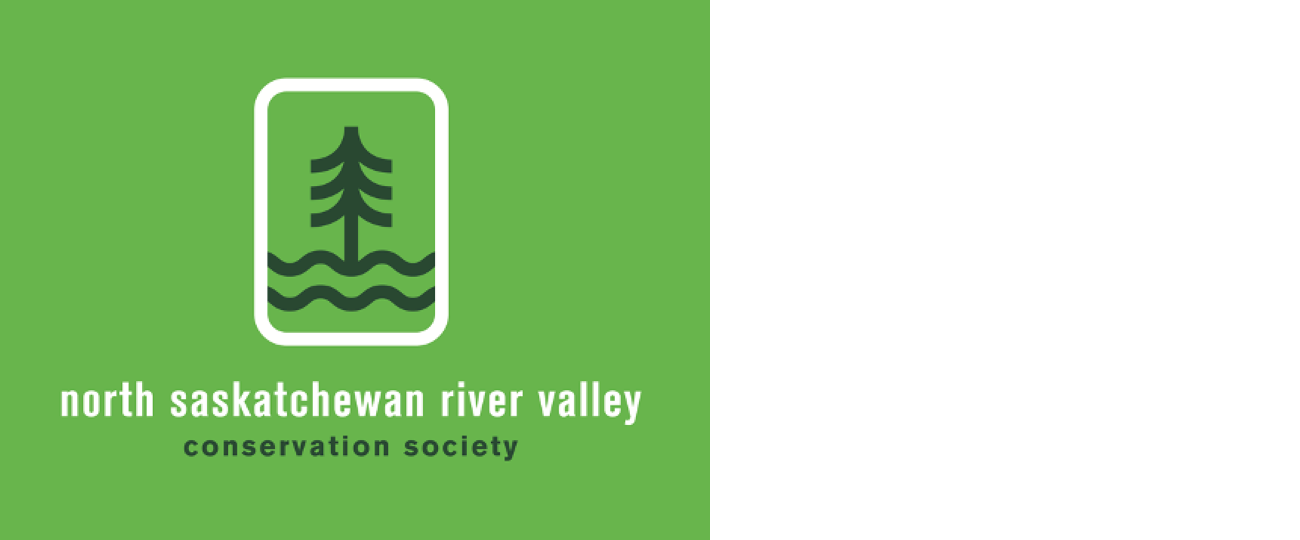Where solar energy is a conservation loss
This title begins a 5-page article in the Summer 2021 edition of the Alberta Wilderness Association Journal. The photo of Epcor’s solar power plant construction in the river valley was taken by Eric Gormley on Thanksgiving weekend.
Our society’s position is green energy should not be produced at the expense of Edmonton’s ribbon of green. This project should not have been approved.
The AWA Journal article highlights the work of the Edmonton River Valley Conservation Coalition which filed for judicial review of City Council’s October 2020 decision. The judicial review of Council’s decision will occur November 19.
The grounds for the case arise from a June 2019 Council motion. The first part of that motion required additional engagement activities with the Enoch Cree First Nation. The second part of the motion is the focus of the judicial review application.
It asked for the “work and reporting necessary to allow Council to fully consider whether the location within the River Valley should be deemed essential by Council.” The Coalition thinks Council simply ignored the findings of the work and never did what the motion required, deeming that the project was essential in its river valley location. Read the article, beginning on page 18, at https://albertawilderness.ca/wp-content/uploads/2021/09/Advocate-Summer-2021-Web.pdf
Alder Flycatcher banded in river valley
The Alder Flycatcher is a rather indistinct olive-green bird with bold wingbars and a distinctive, raspy song of free-beer! They thrive in open settings such as bogs and beaver ponds, where they sit on high perches and forage for insects by flying out from tree perches to take them from leaf surfaces or midair.
Prey include wasps, beetles, flies, butterflies and caterpillars, and grasshoppers. Wintering birds may include fruit in their diet. Alder Flycatchers build an untidy and bulky cup nest of coarse grass. The nest usually has “streamers’ of moss, cattail, and grass hanging from the bottom or the rim of the nest.
The Alder Flycatcher breeds farther north than any other member of the tyrant flycatcher family. It nests as far north as the Kenai Peninsula in Alaska. Little is known about their wintering habitat, since it is difficult to differentiate Alder, Willow, and other Empidonax flycatchers without hearing their songs.
It ranks 12th in the number of bird species banded at Lady Flower Gardens in northeast Edmonton. Learn more at https://www.allaboutbirds.org/guide/Alder_Flycatcher/id
Edmonton park named after this artist
Paul Kane was a largely self-taught artist known for his paintings of Aboriginal peoples and landscapes, which were based on sketches he made during his travels. The photo is his painting of Fort Edmonton. A park in the Oliver neighbourhood is named after him.
Beginning in 1846, with the approval of the Hudson’s Bay Company, he travelled by canoe, York boat, horse, and on foot across the prairies, the subarctic, and mountains with fur-trade brigades or with hired local guides.
Kane’s mission to record the life of Aboriginal peoples was in line with the Victorian imperialist belief that they were all but certain to vanish in the face of relentless encroachment by Western civilization.
He was the first and only artist in Canada to embark on a pictorial and literary project featuring the Country’s Aboriginal peoples, using the medium of portraiture in a time before the dominance of photography. See more at https://www.aci-iac.ca/art-books/paul-kane/key-works/
Trail south of 167 Avenue temporarily closed for geotechnical testing
The shared-use path south of 167 Avenue, along the west side of the North Saskatchewan River, will be closed for geotechnical testing from October 15 to October 22, between the hours of 7am to 9pm Monday through Saturday and 9am to 7pm on Sunday.
Boreholes will be drilled along the trail to gather information required for the construction of the Edmonton-Strathcona County Footbridge, which is anticipated to start in the summer of 2022. All holes will be restored after the testing is complete.
Borehole drilling will also occur in the Strathcona County Riverside Nature Trail site during this timeline. No trail closures are planned. All holes will be restored after the testing is complete. Up to date information at www.edmonton.ca/edmontonstrathconafootbridge
Saskatchewan Glacier and York boat articles
Mark writes “I much enjoy your weekly report, but you may have a couple of errors in last week's newsletter. First, the implication that the Saskatchewan Glacier is the only glacier that feeds our river. The Mistaya, Howse, and Brazeau rivers (Editor note - which feed into the North Saskatchewan River) all have glaciers in their headwaters.
Second, that the York boat brigades went east in the fall and returned the next spring. My understanding is that they went east or down river in the spring and returned in fall.
Comment or contribution
If you have a comment, concern, or question, contact us at nsrivervalley@gmail.com Please also email us river valley photos or event information. Your friends, neighbours and colleagues can sign up for this newsletter on our web site.
Sincerely yours,
Harvey Voogd
North Saskatchewan River Valley Conservation Society
780.691.1712




















